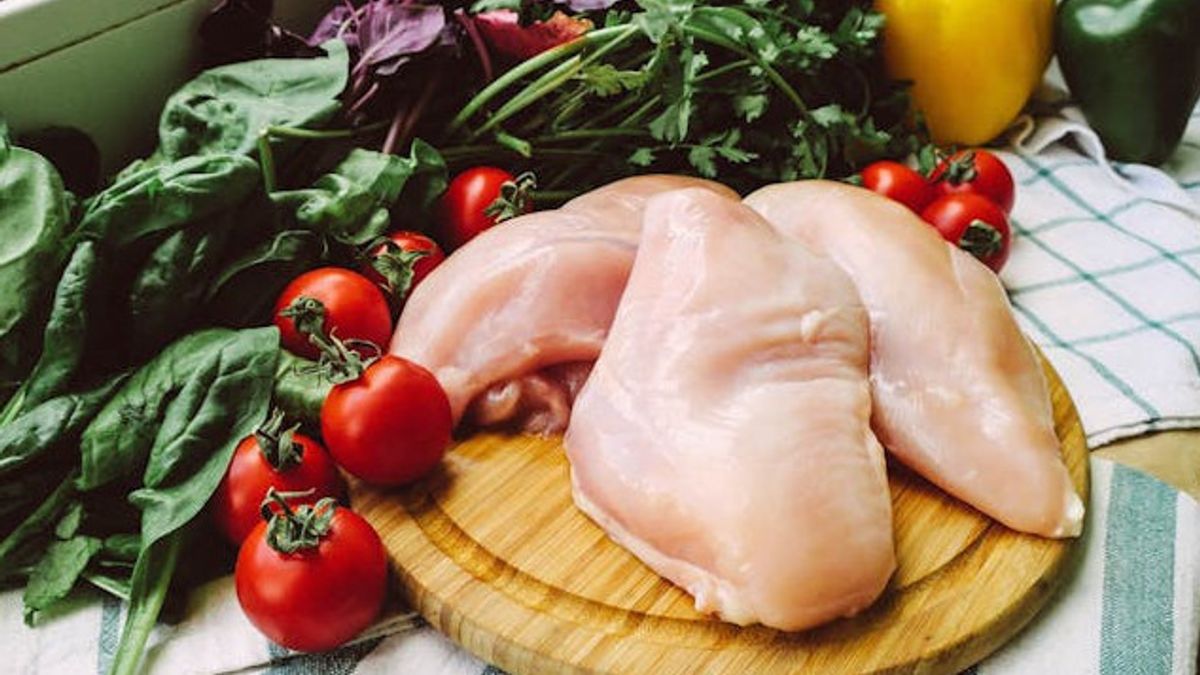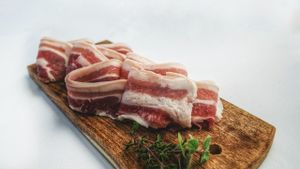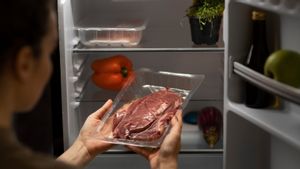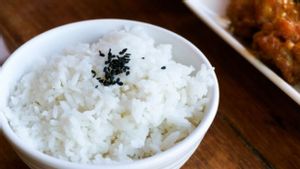JAKARTA - In many households, chicken is considered as the staple so that storage techniques need to be considered. Either raw or cooked to last a long time and deserve consumption.
The Healthline health information provider site, reported on October 10 in an article some time ago, stated that cooked or cooked chicken can be stored for a few days to a year. The duration of survival can vary depending on whether frozen or cooled.
The healthy and delicious source of protein has a high risk of bacterial contamination. That's why preparing, storing, and cooking chicken meat properly is important because otherwise, it can be a source of food congenital diseases.
Storing chicken meat in the refrigerator is comfortable, however, many people may not know how long it will take them to safely cool the chicken. According to the United States Department of Agriculture (USDA), raw chicken can be stored in a refrigerator for about 1.2 days. The same applies to raw turkey and other poultry. While ripe chickens can survive in the refrigerator for approximately 3-4 days.
Storing chickens in the refrigerator helps slow the growth of bacteria because bacteria tend to grow slower at temperatures below 40 degrees Fahrenheit (4 degrees Celsius). In addition, raw chickens should be stored in an anti leaky container to prevent their juice from leaking and polluting other foods. Cooking chickens must be cooled in a waterproof container.
If you want to store chickens for more than a few days, you should store them in the freezer or freezer. Raw chicken slices can be stored in the freezer for up to 9 months, while whole chicken can be frozen for up to 1 year. The cooked chicken can be stored in the freezer for 2 '6 months.
If you keep the chicken in the refrigerator for more than a few days, there is a possibility that the chicken will rot. Here are some ways to find out if the chicken in the refrigerator is rotten:
1. Already passed the expiration date
Raw or ripe chickens that have passed the date preferred to be used before are likely to rot.
2. Change of color
Raw and mature chickens that are starting to turn gray into greenish gray. The grains of gray fungus to green show bacterial growth.
3. Smell
Raw and cooked chicken meat emits an acid smell that resembles ammonia, however, it is difficult to know if the chicken has been peppered with sauce, herbs, or spices.
4. Texture
Chickens whose textures are liquefied mean they are rotten. Rinsing the chicken will not destroy the bacteria. On the other hand, it can spread bacteria from poultry to food, equipment, and other surfaces, causing cross-contamination.
SEE ALSO:
Eating stale chicken can cause a congenital disease, also known as food poisoning. Chickens are at high risk of causing food poisoning because it may be contaminated with bacteria such as Campylobacter, Salmonella, and others.
Usually, the bacteria are removed when fresh chicken is cooked thoroughly. However, still avoid cooking and eating stale chicken. While reheating or cooking can kill surface bacteria, it will not remove some of the toxins produced by bacteria, which can cause food poisoning if consumed.
Food poisoning can cause uncomfortable and sometimes harmful symptoms, including high fever (above 101.5 degrees Fahrenheit or 38.6 degrees Celsius), chills, nausea, vomiting, diarrhea, blood clots, and dehydration. In some cases, severe food poisoning requires hospitalization and even causes death.
The English, Chinese, Japanese, Arabic, and French versions are automatically generated by the AI. So there may still be inaccuracies in translating, please always see Indonesian as our main language. (system supported by DigitalSiber.id)


















